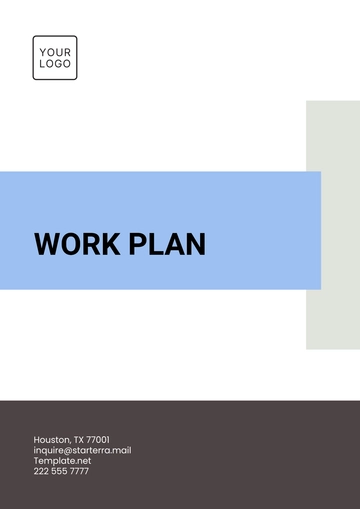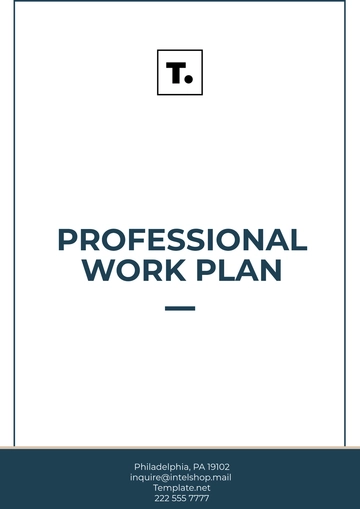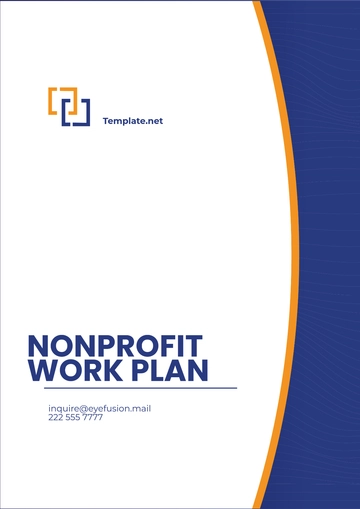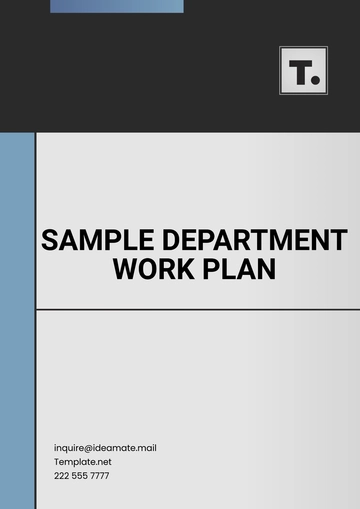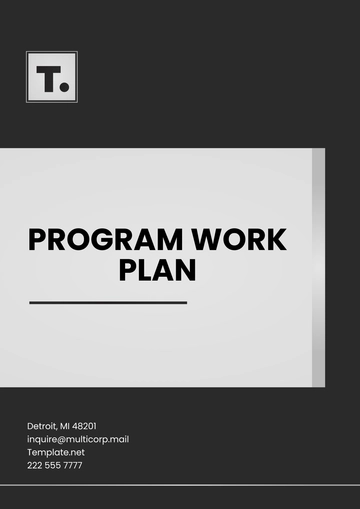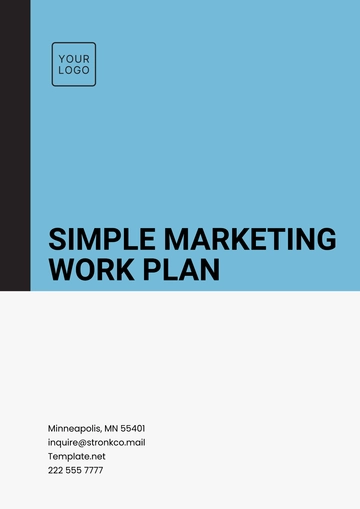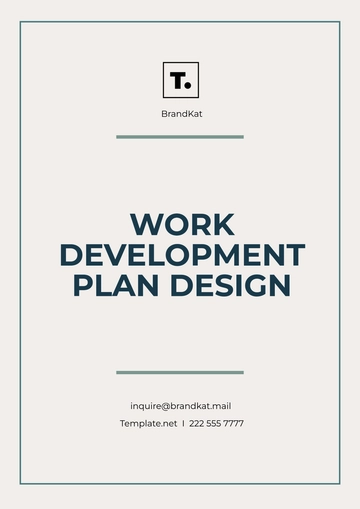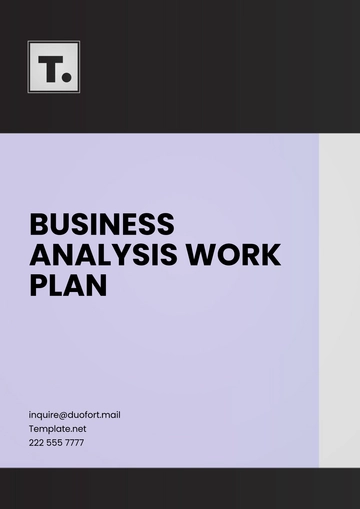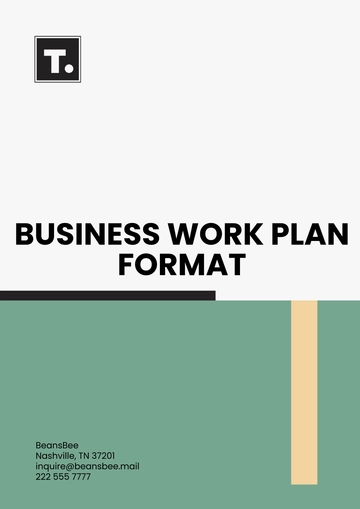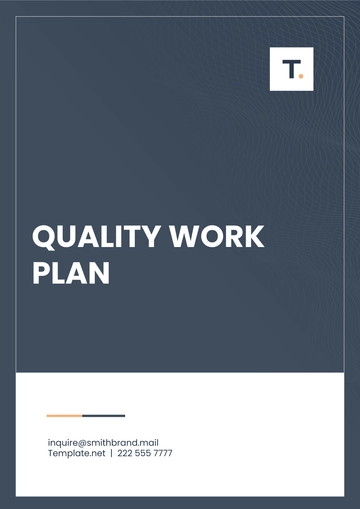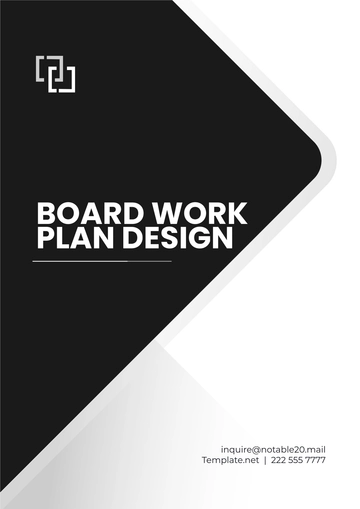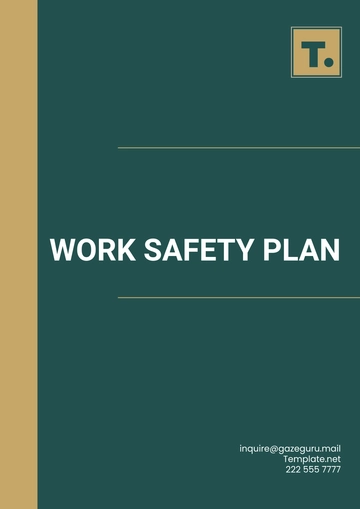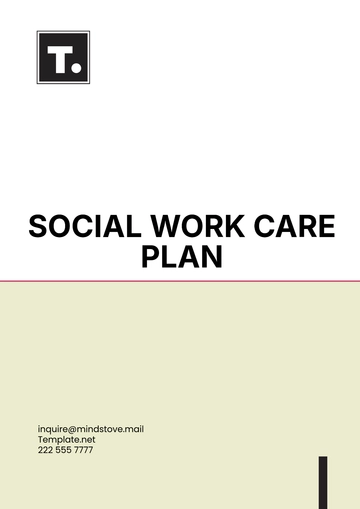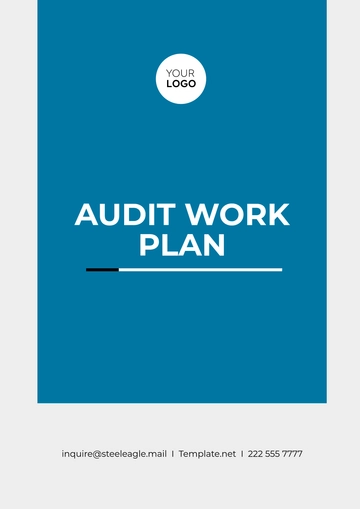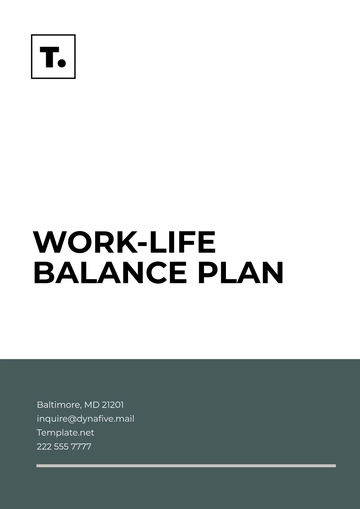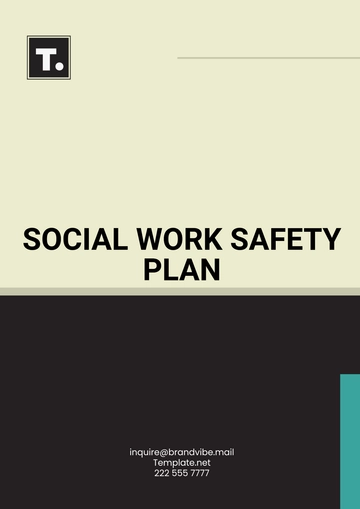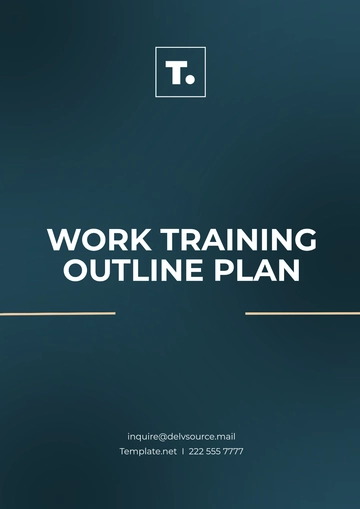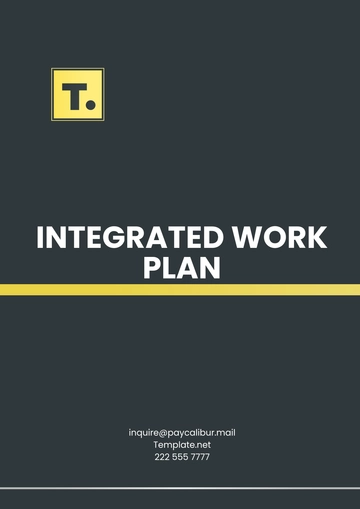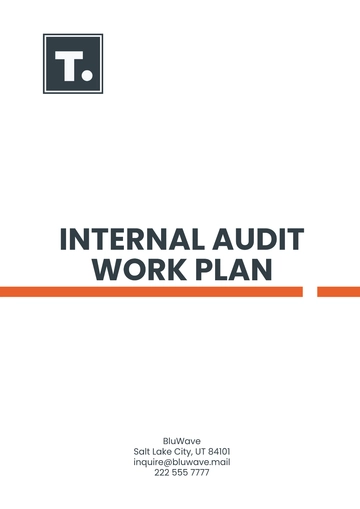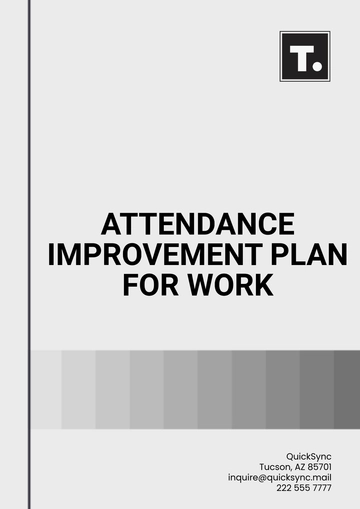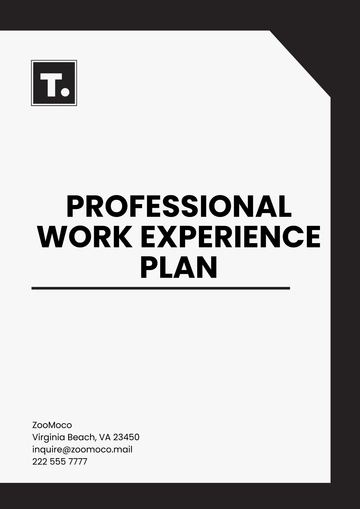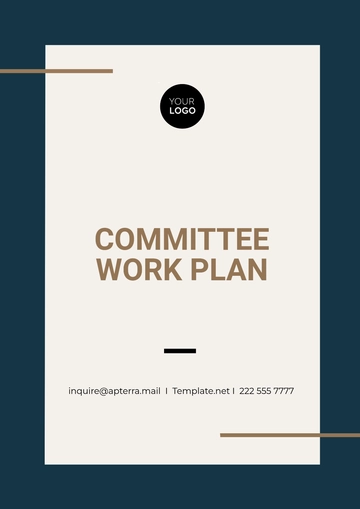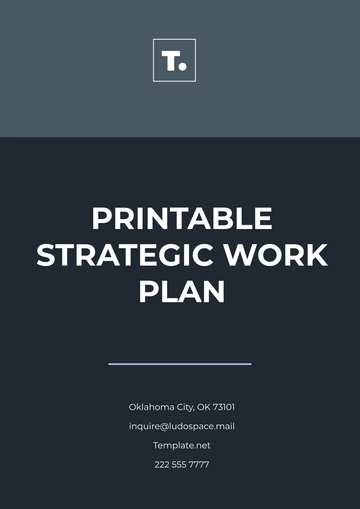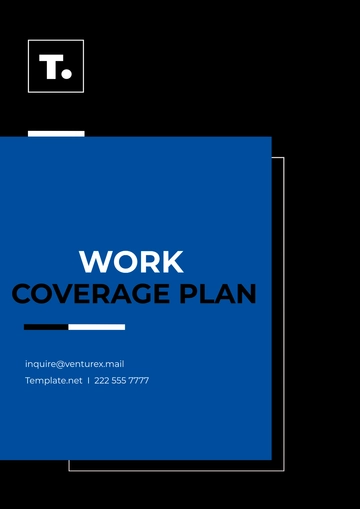Free Consulting Firm Work Plan
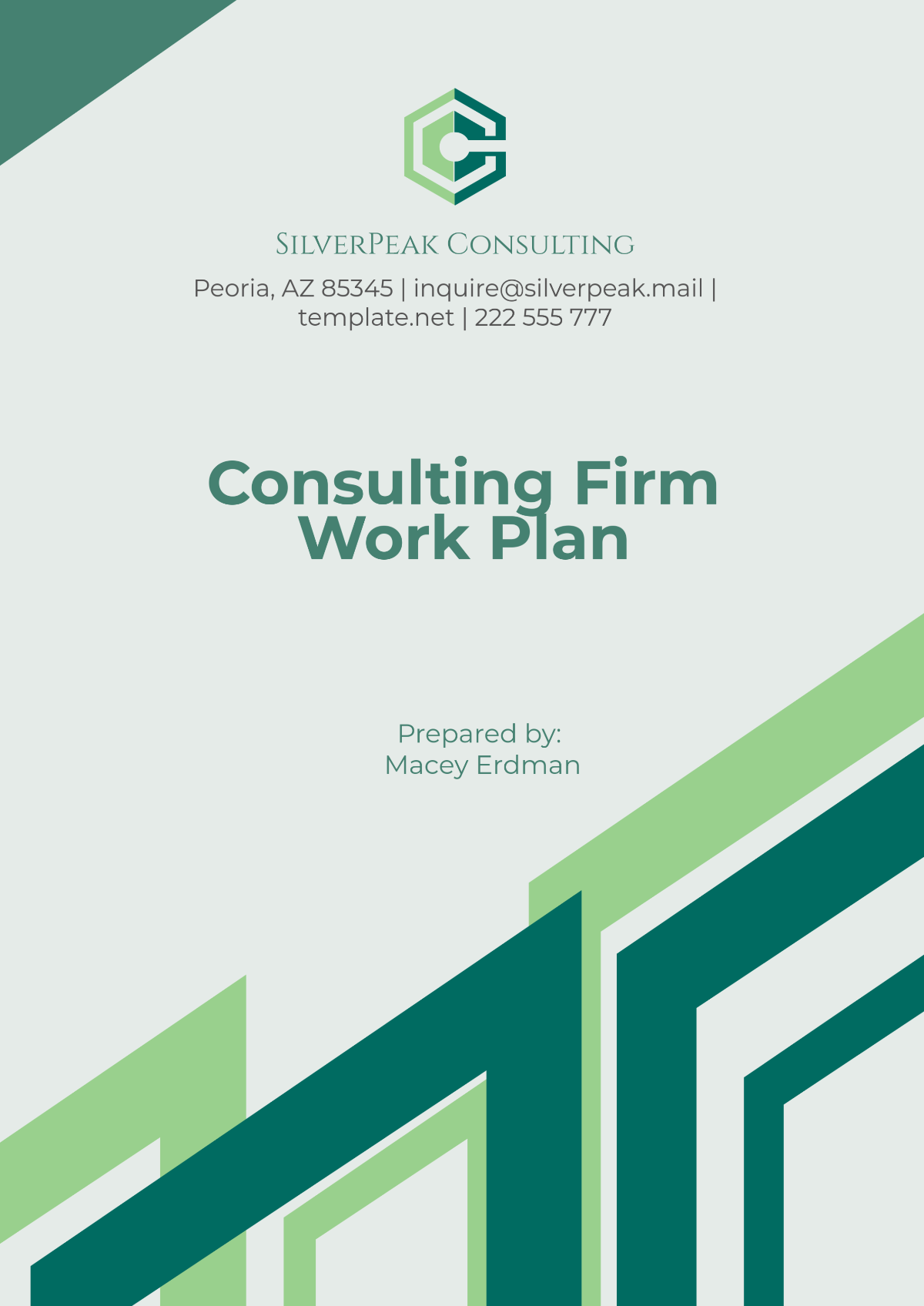
1. Executive Summary
1.1 Purpose of the Work Plan
This work plan is designed to serve as a strategic guide for the consulting engagement between [Your Company Name] and the client. It provides a detailed roadmap for each phase of the project, including the scope of services, project methodology, timelines, key objectives, and deliverables. By following this work plan, both parties will have a mutual understanding of the project's goals and timelines, ensuring successful execution, effective resource utilization, and achievement of the client’s desired outcomes.
1.2 Scope of Work
The scope of work covers an extensive evaluation and transformation process, addressing critical areas of operational improvement, digital innovation, and risk management. [Your Company Name] will analyze current business processes, identify opportunities for digital transformation, and recommend strategies to mitigate risks and increase operational efficiencies. This work plan also includes post-implementation support, ensuring that the changes are effectively embedded into the client's business operations for long-term success.
Key Scope Areas:
Organizational assessments and diagnostic tools.
Design of a customized digital transformation plan.
Recommendations for streamlining workflows and improving efficiency.
Risk management strategies that ensure business continuity.
Implementation of technology solutions and capacity-building for the client's staff.
1.3 Key Objectives
The project is built around a set of core objectives that will guide the consulting process. These objectives are aimed at optimizing business operations, fostering innovation, and enhancing sustainability. The overall goal is to increase the client's operational effectiveness and strategic alignment with industry standards.
Key Objectives:
Operational Efficiency: Identify and implement process improvements to reduce waste and inefficiencies, aiming for at least a [20%] increase in operational efficiency by the end of the project.
Technology Integration: Develop a digital transformation strategy to integrate emerging technologies and optimize internal workflows, enhancing productivity by [15%].
Risk Reduction: Introduce risk management frameworks to reduce operational risk, with the goal of improving business continuity by [25%].
Change Management: Provide training to empower employees to adapt to new systems and processes, ensuring long-term success and sustainability.
1.4 Deliverables Overview
The deliverables throughout the consulting engagement are structured to ensure that each milestone contributes directly to achieving the project objectives. The deliverables include comprehensive reports, detailed recommendations, and ongoing implementation support.
Deliverable | Description | Expected Completion |
|---|---|---|
Initial Assessment Report | A detailed evaluation of the client’s current business processes and structure. | February 28, 2050 |
2. Project Approach and Methodology
2.1 Project Phases
The project will be broken down into clearly defined phases to facilitate systematic progress and ensure focused efforts at each stage. Each phase is designed to address specific project goals and prepare the foundation for the subsequent stage.
Phase 1: Initial Assessment
The first phase will involve gathering detailed data through interviews with key stakeholders, process mapping, and reviews of existing operational documents. This phase will culminate in an assessment report that outlines strengths, weaknesses, and potential areas for improvement. Duration: [2 months].Phase 2: Strategy Development
Based on the initial assessment, [Your Company Name] will develop a strategic plan for process improvements, technology adoption, and risk mitigation. This will include a roadmap for implementing digital tools and systems. Duration: [2 months].Phase 3: Implementation Support
The third phase involves executing the approved strategies, ensuring that all recommendations are put into action. This phase will focus on project management, resource allocation, and monitoring to guarantee successful execution. Duration: [6 months].Phase 4: Review and Evaluation
During the final phase, [Your Company Name] will evaluate the project’s success, measure performance against predefined KPIs, and provide a final report. The client’s team will also be trained to continue managing the changes. Duration: [2 months].
2.2 Consulting Methodologies
Our consulting approach is rooted in a variety of proven methodologies designed to ensure effective and sustainable outcomes. These include both traditional frameworks and cutting-edge strategies tailored to the client’s specific needs.
Business Process Re-engineering (BPR)
This method will help the client transform existing workflows, remove inefficiencies, and create optimized processes. BPR is critical in ensuring that business operations are streamlined for better performance.Lean and Six Sigma
To enhance operational efficiency, [Your Company Name] will use Lean and Six Sigma principles. Lean focuses on eliminating waste and optimizing the value stream, while Six Sigma ensures quality improvements by identifying and removing causes of defects.Agile Methodology
The agile approach allows for flexibility and iterative progress, with frequent reviews and adjustments. Agile is particularly effective for technology projects and change management processes, where rapid adaptation is key to success.Balanced Scorecard
A strategic tool to monitor the effectiveness of business strategies. The balanced scorecard will track key areas like customer satisfaction, internal processes, and financial performance, ensuring alignment with the client's long-term goals.
2.3 Project Milestones and Timeline
The project timeline will be managed through a clear structure of milestones, each representing key achievements. These milestones will help track progress, maintain momentum, and ensure accountability.
Milestone | Description | Target Completion Date |
|---|---|---|
Project Kickoff | Official start of the project, project team assembly | January 1, 2050 |
2.4 Risk Management Strategy
Effective risk management will be integral to the success of this project. The key elements of our risk management strategy will include risk identification, assessment, mitigation strategies, and ongoing monitoring.
Risk Management Approach:
Risk Identification
Risks will be continuously identified throughout the project. Potential risks include delays in technology integration, resistance to change, and unforeseen resource shortages.Risk Analysis
Each identified risk will be assessed for its likelihood and impact, and mitigation strategies will be developed accordingly.Mitigation Strategies
Proactive mitigation strategies will be implemented, including staff training, contingency planning for technology issues, and stakeholder engagement to ensure buy-in from all parties.Ongoing Risk Monitoring
Risks will be monitored continuously throughout the project. Monthly risk review meetings will be conducted, and updates will be shared with the client to ensure all parties are aligned and prepared to manage emerging challenges.
3. Work Plan Activities
3.1 Detailed Activity Schedule
The activities required for successful project execution are outlined below, specifying each task and the responsible parties.
Activity | Assigned Team Member(s) | Start Date | End Date | Status |
|---|---|---|---|---|
Conduct Stakeholder Interviews | Project Lead, Consultants | January 10, 2050 | January 20, 2050 | Not Started |
3.2 Resource Allocation
The resource allocation plan ensures that every phase of the project has the necessary personnel and materials to succeed. For each project phase, specific team members will be assigned based on their expertise, and resources will be provided to support their work.
Resource Type | Allocation Plan | Estimated Cost |
|---|---|---|
Personnel | Consultants, Analysts, Project Managers | $300,000 |
Total | $300,000 |
4. Resource and Staffing Plan
4.1 Project Team Structure
The project team for this engagement will be composed of dedicated professionals with the right mix of expertise to meet the project’s objectives and timelines. The structure is designed to ensure clear communication, efficient delegation, and accountability across all phases of the project. The team will consist of both internal consultants from [Your Company Name] as well as external subject-matter experts when necessary.
The proposed structure is as follows:
Project Sponsor: Senior leadership at [Your Company Name], responsible for strategic guidance and ensuring the project aligns with organizational goals.
Project Lead: Responsible for overseeing all phases of the project and ensuring adherence to timelines, deliverables, and client expectations. This individual will serve as the primary point of contact between the client and [Your Company Name].
Consulting Team: A group of business process consultants, data analysts, and technology experts who will collaborate with the client to assess the current state, define improvements, and implement strategies.
Implementation Team: This includes project managers, technology consultants, and trainers who will oversee the practical implementation of the changes, including system integration, process optimization, and employee training.
Quality Assurance (QA) Team: Ensures that the solutions and processes delivered are in line with the project’s quality standards, identifying areas for improvement before implementation.
Client Liaison: A dedicated client-facing team member, often a relationship manager, who will ensure effective communication between [Your Company Name] and the client’s key stakeholders.
The structure allows for flexibility, ensuring that team members with the appropriate skill sets are deployed at each project phase. It also fosters a collaborative environment where knowledge sharing is emphasized, improving the efficiency of decision-making and solution delivery.
4.2 Roles and Responsibilities
The following outlines the key roles and responsibilities of the project team:
Role | Responsibility |
|---|---|
Project Sponsor | Provide strategic direction, ensure alignment with the client's long-term objectives, secure necessary resources, and manage escalations. |
These roles will be filled by professionals with deep expertise in their respective fields, ensuring that the team can respond flexibly and proactively to the project’s evolving needs.
4.3 Staffing Allocation
Staffing for this project will be done based on the needs of each phase. A detailed staffing plan will be implemented to ensure that the right personnel are allocated at the right time, and that the project team can efficiently handle any unexpected changes or challenges that arise. Each team member will have an assigned percentage of their time allocated to this project, ensuring adequate focus and resources at all stages.
Staff Member | Allocation Percentage | Project Phase Coverage |
|---|---|---|
Project Lead | 100% | Throughout the project |
4.4 Budget Allocation
Effective budget management is a key factor in ensuring the project stays within financial constraints while still achieving its goals. The budget will be allocated across various categories such as personnel, technology resources, training, and miscellaneous expenses. Below is the proposed budget breakdown for the project:
Expense Category | Estimated Cost |
|---|---|
Personnel Costs | $300,000 |
Total Project Budget | $300,000 |
This budget will be reviewed regularly and adjusted as necessary to ensure that resources are allocated appropriately for each phase of the project.
5. Performance Metrics and Reporting
5.1 Key Performance Indicators (KPIs)
To assess the effectiveness and progress of the project, [Your Company Name] will track several Key Performance Indicators (KPIs). These KPIs will measure success at various stages, ensuring that the project is on track and aligned with the client’s strategic objectives.
Milestone Achievement Rate
This KPI tracks whether the project is meeting its key milestones on schedule. The target is to complete at least [90%] of the milestones on time. This ensures that both the client and the project team remain aligned with the overall timeline.Operational Efficiency Improvement
This measures the increase in operational efficiency after implementing process changes and technology solutions. The goal is to achieve at least a [20%] improvement in operational efficiency across key departments.Client Satisfaction
Client satisfaction will be assessed through surveys conducted at the end of each phase. The goal is to achieve a satisfaction score of at least [8/10], ensuring that the client feels confident in the progress and outcomes of the project.Technology Adoption Rate
This KPI tracks the successful implementation and utilization of new technologies within the client's business. The target is for at least [80%] of the relevant staff to actively use the adopted systems within the first [3 months] of implementation.Risk Mitigation Effectiveness
This measures the extent to which identified risks have been mitigated during the project. The goal is to reduce the likelihood of any operational disruption by at least [25%].
5.2 Reporting Frequency and Structure
To ensure transparency and facilitate communication, regular reports will be provided to the client. These reports will be structured to offer clear insights into the progress of the project, any challenges encountered, and solutions that are being implemented.
Weekly Progress Reports: A brief update on the activities completed, the status of deliverables, and any issues that need addressing.
Monthly Status Reports: A more detailed report that includes an overview of the completed tasks, key metrics, and any adjustments made to the original plan.
Quarterly Review Meetings: A formal presentation and discussion with the client to review progress, KPIs, and overall success.
5.3 Evaluation and Continuous Improvement
Throughout the project, performance will be evaluated regularly to ensure that both the client’s objectives and the project’s goals are being met. Any deviations from the plan will be identified and corrected, and lessons learned will be applied to ensure that the project delivers the best possible results.
Post-Phase Evaluations: After completing each phase, [Your Company Name] will conduct internal evaluations to assess what went well and what could be improved. This will help refine the approach for the next phase.
Post-Project Evaluation: After project completion, a final evaluation will be conducted to review overall success, identify areas of improvement, and determine how processes can be optimized for future projects.
5.4 Continuous Improvement Process
The continuous improvement process will ensure that lessons learned during the project are captured and applied. A culture of feedback and adaptation will be fostered, allowing the project to evolve and improve in real time.
6. Client Engagement and Communication Plan
6.1 Communication Objectives
Clear and consistent communication is critical to the success of the project. The communication plan will ensure that both parties are always aware of progress, challenges, and upcoming milestones.
Transparency: Keep the client fully informed about the status of the project, potential risks, and any issues that may arise.
Timeliness: Ensure that information is communicated promptly to allow for timely decision-making.
Clarity: Provide concise, clear communication that is easy to understand and actionable.
6.2 Communication Channels
Multiple communication channels will be used throughout the project to ensure accessibility and responsiveness:
Email: For formal communication, updates, and documentation.
Project Management Software: To track milestones, share documents, and facilitate collaboration.
Video Calls and Meetings: To discuss progress, review deliverables, and address concerns in real time.
In-Person Meetings: For critical phases or issues that require deeper discussion or team alignment.
6.3 Reporting to Stakeholders
In addition to the regular project updates, formal presentations will be given to key client stakeholders. These sessions will provide an opportunity for higher-level review and feedback to ensure that the project remains aligned with the client’s overall goals.
7. Risk Management Plan
7.1 Identifying Risks
The success of the project depends on the proactive identification and mitigation of potential risks. A thorough risk assessment will be conducted at the outset of the project, followed by regular reviews to address any emerging risks.
Some common risks include:
Scope Creep: The risk of the project’s objectives expanding beyond the original agreement, leading to delays and additional costs.
Technology Integration Issues: The risk that new systems or technologies may not be compatible with existing infrastructure or operations.
Budget Overruns: The risk of exceeding the allocated budget due to unforeseen expenses or miscalculations in resource allocation.
Staffing Challenges: The risk of insufficient resources or personnel turnover, which could impact the project timeline.
7.2 Mitigation Strategies
Once risks are identified, specific mitigation strategies will be developed to address them. These strategies may include additional training, increased stakeholder communication, or adjusting the project timeline.
Risk | Mitigation Strategy | Impact Assessment |
|---|---|---|
Scope Creep | Clearly define scope and review scope changes with stakeholders. | Medium |
7.3 Monitoring and Reporting
Ongoing monitoring of risk factors will be carried out, and adjustments will be made as necessary. Monthly risk reports will be provided to the client to highlight new risks and updates on mitigation efforts.
8. Change Management Plan
8.1 Change Management Strategy
A change management strategy is critical for ensuring smooth transitions during the implementation of new processes or technologies. The goal is to minimize resistance and ensure that employees and stakeholders embrace the changes positively.
The strategy includes:
Communication: Clear messaging regarding the purpose and benefits of the changes.
Training: Providing adequate training to all employees affected by the change.
Support: Offering ongoing support to address any concerns or difficulties with the new systems or processes.
8.2 Change Management Activities
Change management activities will be integrated into each phase of the project:
Stakeholder Engagement: Regularly engage with key stakeholders to explain the reasons for change and the expected benefits.
Training Sessions: Design and implement training programs to prepare employees for new processes and technologies.
Feedback Loops: Establish feedback mechanisms to understand employee concerns and provide solutions.
Activity | Timeline | Responsible Party |
|---|---|---|
Stakeholder Communication | Throughout the project | Project Lead |
8.3 Managing Resistance to Change
To ensure the success of the project, it is important to anticipate and address any resistance to change. Resistance will be managed through active listening, addressing concerns, and providing solutions that ensure the workforce understands the benefits of the changes.
- 100% Customizable, free editor
- Access 1 Million+ Templates, photo’s & graphics
- Download or share as a template
- Click and replace photos, graphics, text, backgrounds
- Resize, crop, AI write & more
- Access advanced editor
Stay organized with the Consulting Firm Work Plan Template from Template.net. This editable and customizable template helps you break down project tasks, timelines, and responsibilities. Tailor it using our Ai Editor Tool to create an efficient work plan that guides each project to success.
You may also like
- Finance Plan
- Construction Plan
- Sales Plan
- Development Plan
- Career Plan
- Budget Plan
- HR Plan
- Education Plan
- Transition Plan
- Work Plan
- Training Plan
- Communication Plan
- Operation Plan
- Health And Safety Plan
- Strategy Plan
- Professional Development Plan
- Advertising Plan
- Risk Management Plan
- Restaurant Plan
- School Plan
- Nursing Home Patient Care Plan
- Nursing Care Plan
- Plan Event
- Startup Plan
- Social Media Plan
- Staffing Plan
- Annual Plan
- Content Plan
- Payment Plan
- Implementation Plan
- Hotel Plan
- Workout Plan
- Accounting Plan
- Campaign Plan
- Essay Plan
- 30 60 90 Day Plan
- Research Plan
- Recruitment Plan
- 90 Day Plan
- Quarterly Plan
- Emergency Plan
- 5 Year Plan
- Gym Plan
- Personal Plan
- IT and Software Plan
- Treatment Plan
- Real Estate Plan
- Law Firm Plan
- Healthcare Plan
- Improvement Plan
- Media Plan
- 5 Year Business Plan
- Learning Plan
- Marketing Campaign Plan
- Travel Agency Plan
- Cleaning Services Plan
- Interior Design Plan
- Performance Plan
- PR Plan
- Birth Plan
- Life Plan
- SEO Plan
- Disaster Recovery Plan
- Continuity Plan
- Launch Plan
- Legal Plan
- Behavior Plan
- Performance Improvement Plan
- Salon Plan
- Security Plan
- Security Management Plan
- Employee Development Plan
- Quality Plan
- Service Improvement Plan
- Growth Plan
- Incident Response Plan
- Basketball Plan
- Emergency Action Plan
- Product Launch Plan
- Spa Plan
- Employee Training Plan
- Data Analysis Plan
- Employee Action Plan
- Territory Plan
- Audit Plan
- Classroom Plan
- Activity Plan
- Parenting Plan
- Care Plan
- Project Execution Plan
- Exercise Plan
- Internship Plan
- Software Development Plan
- Continuous Improvement Plan
- Leave Plan
- 90 Day Sales Plan
- Advertising Agency Plan
- Employee Transition Plan
- Smart Action Plan
- Workplace Safety Plan
- Behavior Change Plan
- Contingency Plan
- Continuity of Operations Plan
- Health Plan
- Quality Control Plan
- Self Plan
- Sports Development Plan
- Change Management Plan
- Ecommerce Plan
- Personal Financial Plan
- Process Improvement Plan
- 30-60-90 Day Sales Plan
- Crisis Management Plan
- Engagement Plan
- Execution Plan
- Pandemic Plan
- Quality Assurance Plan
- Service Continuity Plan
- Agile Project Plan
- Fundraising Plan
- Job Transition Plan
- Asset Maintenance Plan
- Maintenance Plan
- Software Test Plan
- Staff Training and Development Plan
- 3 Year Plan
- Brand Activation Plan
- Release Plan
- Resource Plan
- Risk Mitigation Plan
- Teacher Plan
- 30 60 90 Day Plan for New Manager
- Food Safety Plan
- Food Truck Plan
- Hiring Plan
- Quality Management Plan
- Wellness Plan
- Behavior Intervention Plan
- Bonus Plan
- Investment Plan
- Maternity Leave Plan
- Pandemic Response Plan
- Succession Planning
- Coaching Plan
- Configuration Management Plan
- Remote Work Plan
- Self Care Plan
- Teaching Plan
- 100-Day Plan
- HACCP Plan
- Student Plan
- Sustainability Plan
- 30 60 90 Day Plan for Interview
- Access Plan
- Site Specific Safety Plan
